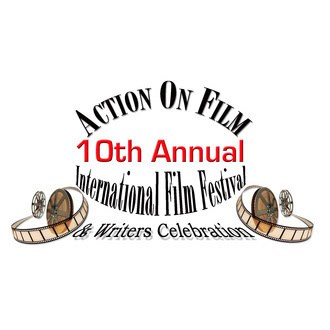A Conversation with Kathleen Sexton Kaiser
I met Kathleen at the wonderfully produced 805 Writers’ Conference. I make a point of that, since she produced it. Kathleen is a savvy navigator of all things publishing. With four published books and three plays under her belt, she understands how authors and artists are often confused by the new world of marketing their products and themselves. Kathleen, whose expertise encompasses seminars, conferences, special events, publicity, marketing communications and trade show production, maintains a small list of clients that allow her to continue her volunteerism, which includes being co-founder and executive director of the Pacific Institute for Professional Writing, producer of the annual 805 Writers’ Conference, president of the national organization Small Publishers, Artists & Writers Network (SPAWN), and organizer of a monthly literary meeting in Thousand Oaks, CA sponsored by SPAWN and the Independent Writers of Southern California. The following is a conversation with Kathleen on books, writers and the brave new world of publishing.
How did you get started working with writers?
I’ve always had people that write in my world. My career began as a music journalist and most of my friends were writers for local papers or magazines. Moving into the corporate world, I wrote marketing copy or hired copywriters. It was a learning curve to understand how to creatively describe a business or product.
I’d written a novel, and took it to the Santa Barbara Writers Conference in 1998. That’s where I met this new world of writers and instructors—pros that were writing or editing everyday. The conference was a master class for me and is where I met the legendary southern California editor, Shelly Lowenkopf. He changed my entire view of writing.
What initially drew you to the field?
Always been a storyteller. Made up stories for my paper dolls, then for friends to act out. Was a school newspaper columnist by seventh grade and published in a local newspaper at sixteen. Founded a Beatles Fan Club in San Diego at fifteen and wrote a small newsletter. By twenty, I was an editor at Teen Screen Magazine in Hollywood, next west coast editor for Rock Magazine while freelancing articles. I worked until I was 32 as either a music journalist or publicist writing press releases. During that time, I wrote countless articles for publications in America, Canada, England, Italy and Japan and four books on rock and roll for Japan.
In 1997 I fell and broke my foot. Cooped up in the house I came up with an idea for a screenplay that eventually became my novel.
What are the main changes you’ve seen since you began working with authors?
How much they have to do to market their books and become mini-entrepreneurs. They must have an ability to write blogs, tweets, and talk about their books. Fortunately, I worked for 20 years in graphic design following the desktop publishing revolution of the late 80s right into the internet. Gave me a leg up on understanding the technology and, by working with a real futurist, Jonathan Seybold, I was introduced early to new tools that made writing and designing books easier. Then the World Wide Web exploded and we can never look back.
Authors are now in control of their destiny as long as they want to put in the hard work. Publishing is a business, not a hobby. It takes commitment.
How has self-publishing changed the publishing world?
It’s not really self-publishing that changed, it was two things that changed publishing: going digital drastically lowered the price of producing a quality looking book; and two, Amazon. Vanity presses have been around forever. Now you don’t need to fill your garage with boxes of boxes. Everything is done Print on Demand. If anyone tells you to order hundreds of books, run away. Totally not necessary. They are just taking your money.
For years independent films have been considered art, but self-published books were viewed as vanity projects. Is that changing and if so, why?
The content and quality are what matter. Is it art? Only if it moves you. It’s all in story. Personally, I put down a book with grammar and construction errors because they pull me right out of the story. Most important relationship a writer has is with a great editor. They can save your book. And I don’t mean editors for grammar or punctuation. I mean real development and content editors.
What are some of the biggest pitfalls that self-published writers need to be aware of?
Cost, distribution, marketing, and the time commitment you need to make to have any success. Plus, having a well-written story that follows the norms for writing in the 21st Century. If you haven’t read 20 bestsellers in your genre over the last 3 years, then you have no idea how much style has drastically changed. What readers want now are action from the first page. The days of 70s and 80s writing with long setups are gone.
Remember, buyers can read the first 3 pages on Amazon. If you don’t grab them within 3 pages, they don’t buy your book. Writing is competing with film, which drops you into the action immediately and your character must fight they way out from page one.
Pitfalls include the many scammers out there pretending to be publishers who take your book and then charge you a small fortune to publish your book. NO REAL PUBLISHER charges the writer. There are some good hybrid publishers who charge a small fee, but READ THE FINE PRINT.
Tell me about The Small Publishers, Artists & Writers Network (SPAWN)
SPAWN has been around for twenty years. In the beginning their goal was to build a community of writers, which the internet allowed because we didn’t need meetings with everything online. We have an award-winning website that is a top resource for writers. Our free monthly newsletter goes out to over 4,000 writers in five countries. Our Market Update, which is a member benefit, gives tips for marketing a book, for illustrators on style and color trends, for small publishers an update on what is happening in the world of publishing. I read or monitor over 50 newsletters to create each Update, bringing what I feel is the latest news, trends, and tips SPAWN members need to stay on the leading edge of book publishing.
How did you become involved with the 805 Writers’ Conference?
I produced the Ventura Writers Fair in 2010 and invited Shelly Lowenkopf to speak. He and I got talking afterwards about the many changes happening in the 805 area, the decline in the Santa Barbara Writers Conference and the need for better education. We co-founded the Pacific Institute for Professional Writing in 2011 and launched the first conference along with a series of workshops and intensives. This year we launched the Indie Author Seminars for writers considering self-publishing. Since I produced technology conferences and trade shows for years, it was a natural fit to be the producer of the 805 Writers’ Conference.
What part of your work fulfills you the most?
Hearing the joy in a writer’s voice when they receive that first printed copy of their book. The struggle and time invested to get to that point can be exhausting and the sheer triumph of holding your new book is amazing. I know it was for me.
Helping people avoid mistakes I’ve seen done in the past. Showing them how to build an audience and sell some books. Though I run two literary groups, my main work is in book marketing. I want to share what I’ve learned with others.
What are the three main tips you’d give to writers?
- Learn the craft. Take classes from established pros that work in the industry. If you can’t find one in your area, take university writing classes at night.
- Attend writer conferences. Meet the instructors, get on their newsletter or Facebook lists and learn. Meet agents and editors. Submit your book to qualified editors and listen to what they say. With my novel, I went through two editors that helped my writing more than anything else.
- Understand that publishing is a business that must be worked. You need to commit to finding and building your audience. Even bestselling authors must now market their own books. Marketing departments at publishers have gone the way of dodo birds.
Learn more about Kathleen at www.KathleenKaiserAndAssociates.com.



